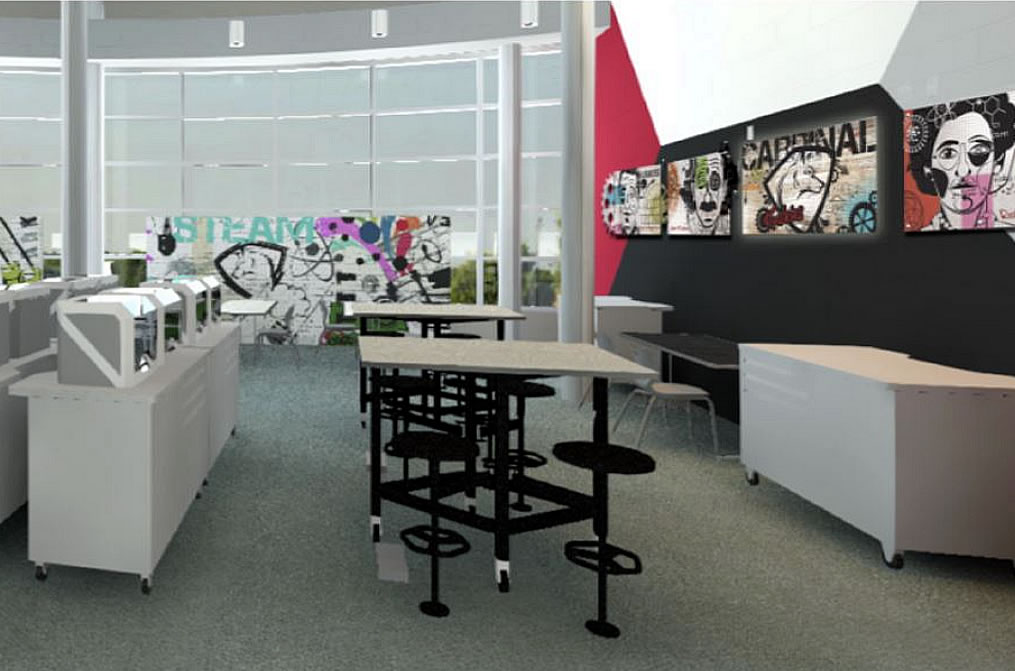Stephanie Hein, Program Director – PHabLAB
Non-traditional learning that emphasizes collaboration and hands-on experiences has steadily grown in popularity thanks to the many benefits it offers students and staff. Dedicated makerspaces within schools are an invaluable component of this kind of learning and offer a resource that can be shared by the entire community.
The unfamiliar design and technology in a makerspace can cause implementation to be a bit of a challenge for schools. However, by joining with a full-service space designer that focuses on making the space customizable, functional and sustainable, schools can be confident in its success.
Customizable
Building a customizable space starts with meeting schools where they are. In addition to typical considerations, such as the size of the school and age of the students, existing initiatives need to be taken into account as well. Some schools have already incorporated career and technical education (CTE) into their curriculum before they start building a designated space, and some are starting from square one. Where the school falls on that spectrum informs how robust the space’s capabilities and the team’s support need to be.
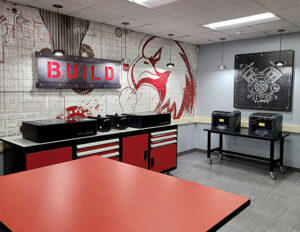 Understanding the school’s existing experiential learning offerings is also important in determining which machines to put in the makerspace. Vinyl cutters are often a good first step and a common hobby machine that educators may be familiar with. Laser cutters are similarly easy to use and efficient. Another popular and accessible choice is a 3D printer, but those can be a bit time-consuming for shorter class periods. Computer numerical control (CNC) machines are the most complex, but an entry-level version in a makerspace can help introduce students to the technology they will use in future CTE classes. Every school has a machine (or machines) that will best serve its needs and inform the design of the rest of the space.
Understanding the school’s existing experiential learning offerings is also important in determining which machines to put in the makerspace. Vinyl cutters are often a good first step and a common hobby machine that educators may be familiar with. Laser cutters are similarly easy to use and efficient. Another popular and accessible choice is a 3D printer, but those can be a bit time-consuming for shorter class periods. Computer numerical control (CNC) machines are the most complex, but an entry-level version in a makerspace can help introduce students to the technology they will use in future CTE classes. Every school has a machine (or machines) that will best serve its needs and inform the design of the rest of the space.
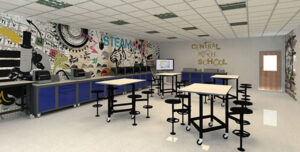 Another customizable feature unique to makerspaces is moveable furniture. Unlike most classrooms that service a single teacher or subject area, makerspaces are traditionally used as a communal resource open to everyone. While this is a testament to the utility of makerspaces and STEM/STEAM learning in general, it also means that the space needs to be adaptable to a variety of ages, subjects and project types. Installing mobile furniture allows educators and students to quickly and easily transform the space into what they need without taking time away from learning.
Another customizable feature unique to makerspaces is moveable furniture. Unlike most classrooms that service a single teacher or subject area, makerspaces are traditionally used as a communal resource open to everyone. While this is a testament to the utility of makerspaces and STEM/STEAM learning in general, it also means that the space needs to be adaptable to a variety of ages, subjects and project types. Installing mobile furniture allows educators and students to quickly and easily transform the space into what they need without taking time away from learning.
Functional
Schools implementing a makerspace want to be sure they do it right. No one wants to spend the money for a 3D printer and have it sit unused in a classroom. Bringing in expert help can be the key to ensuring the investment has the support it needs for long-term success.
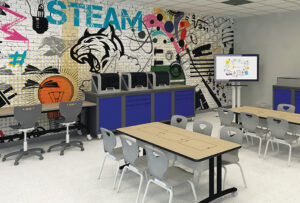 One area where experienced professionals can improve a school’s maker program is with ongoing staff training. For example, PHabLAB will aim to train at least a dozen school staff members from a variety of different subjects on how to use the machines in the makerspace. After the initial training, PHabLAB remains a resource for schools to use in ensuring the longevity of the maker programs. Training for teachers is always available if more staff is interested in using the space or there is significant turnover within the school. This ensures that there are no gaps between knowledgeable instructors who can take advantage of the makerspace.
One area where experienced professionals can improve a school’s maker program is with ongoing staff training. For example, PHabLAB will aim to train at least a dozen school staff members from a variety of different subjects on how to use the machines in the makerspace. After the initial training, PHabLAB remains a resource for schools to use in ensuring the longevity of the maker programs. Training for teachers is always available if more staff is interested in using the space or there is significant turnover within the school. This ensures that there are no gaps between knowledgeable instructors who can take advantage of the makerspace.
Another resource PHabLAB provides to help schools build their program is a library of projects. These activities range in subjects and difficulty, and each project comes with a list of necessary materials and instructions. Teachers can incorporate these into their existing curriculum as they become comfortable with the space and its machines.
Both of these offerings combine with the years of design experience to create not only a space, but a program that schools can be proud of.
Sustainable
A makerspace is a considerable investment, and school administrations need to be confident that they will be usable for a long time. As with all Palmer Hamilton products, the furniture delivered by PHabLAB is highly durable for safe and long-lasting use.
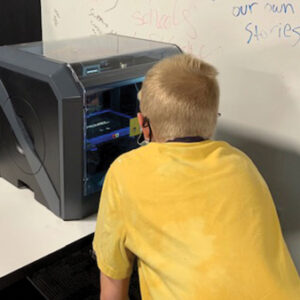 In addition to the physical space, the value the programs themselves provide to students makes them highly sustainable as well. There is a lot of demand for skilled workers in the job market, and these makerspaces introduce students to important technology they could use to build a future career. Many schools have opted for 3D printers or CNC machines because students can become certified in their use, an excellent addition to any resume. In the short term, there are also a lot of students who do not respond well to traditional lecture-based instruction and can become disengaged from learning and their peers. Makerspaces offer another opportunity for those students to find something they can excel in at school, so they are excited to come to class every day.
In addition to the physical space, the value the programs themselves provide to students makes them highly sustainable as well. There is a lot of demand for skilled workers in the job market, and these makerspaces introduce students to important technology they could use to build a future career. Many schools have opted for 3D printers or CNC machines because students can become certified in their use, an excellent addition to any resume. In the short term, there are also a lot of students who do not respond well to traditional lecture-based instruction and can become disengaged from learning and their peers. Makerspaces offer another opportunity for those students to find something they can excel in at school, so they are excited to come to class every day.
Essentially, the cornerstones of a quality makerspace are the same as the projects made within them. Does it fit the needs of the application? Is it made with a solid foundation and the right materials? And, will it be around for as long as it needs to be? Answering yes to all these questions is critical to ensuring your makerspace makes the grade.

